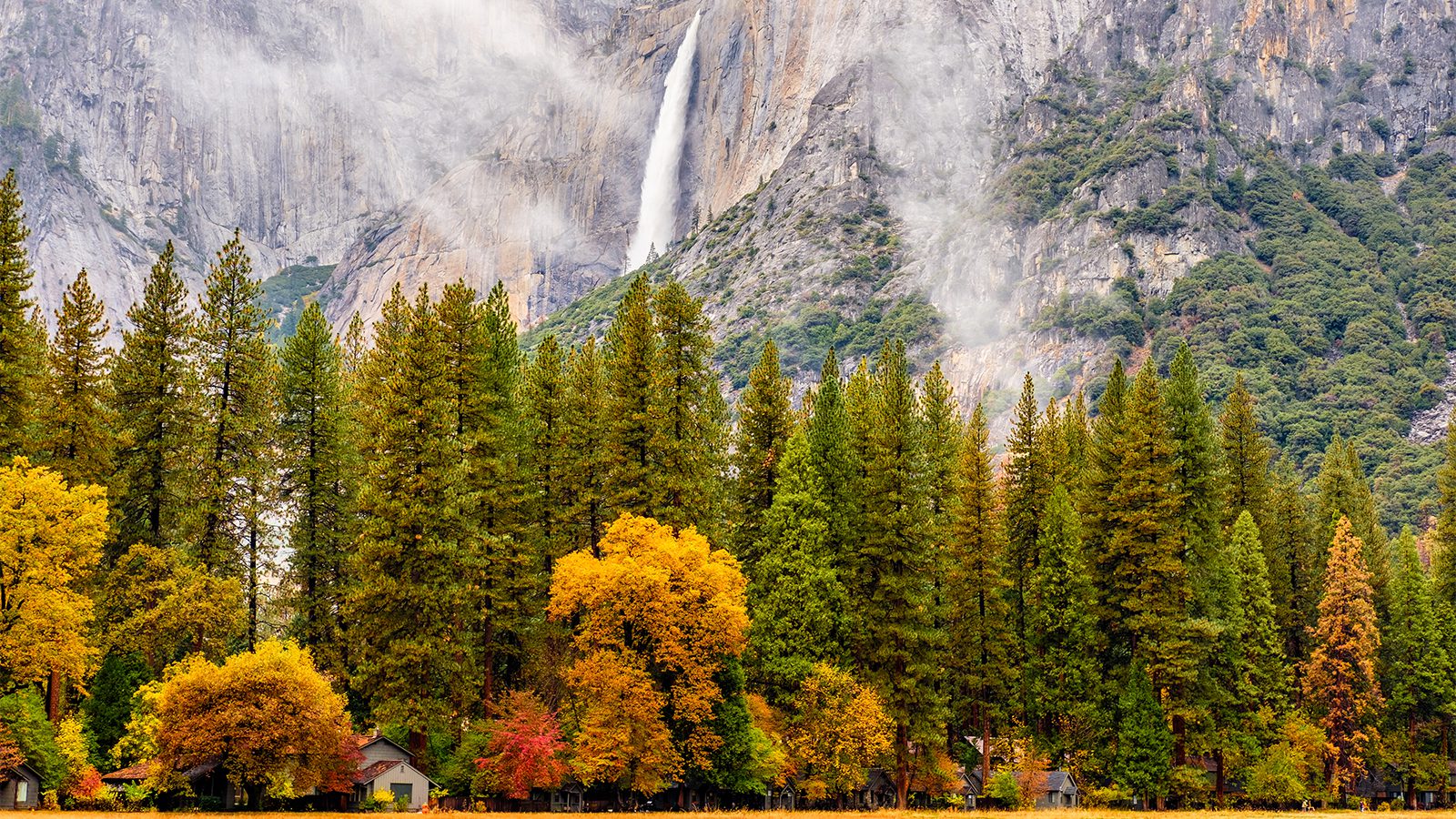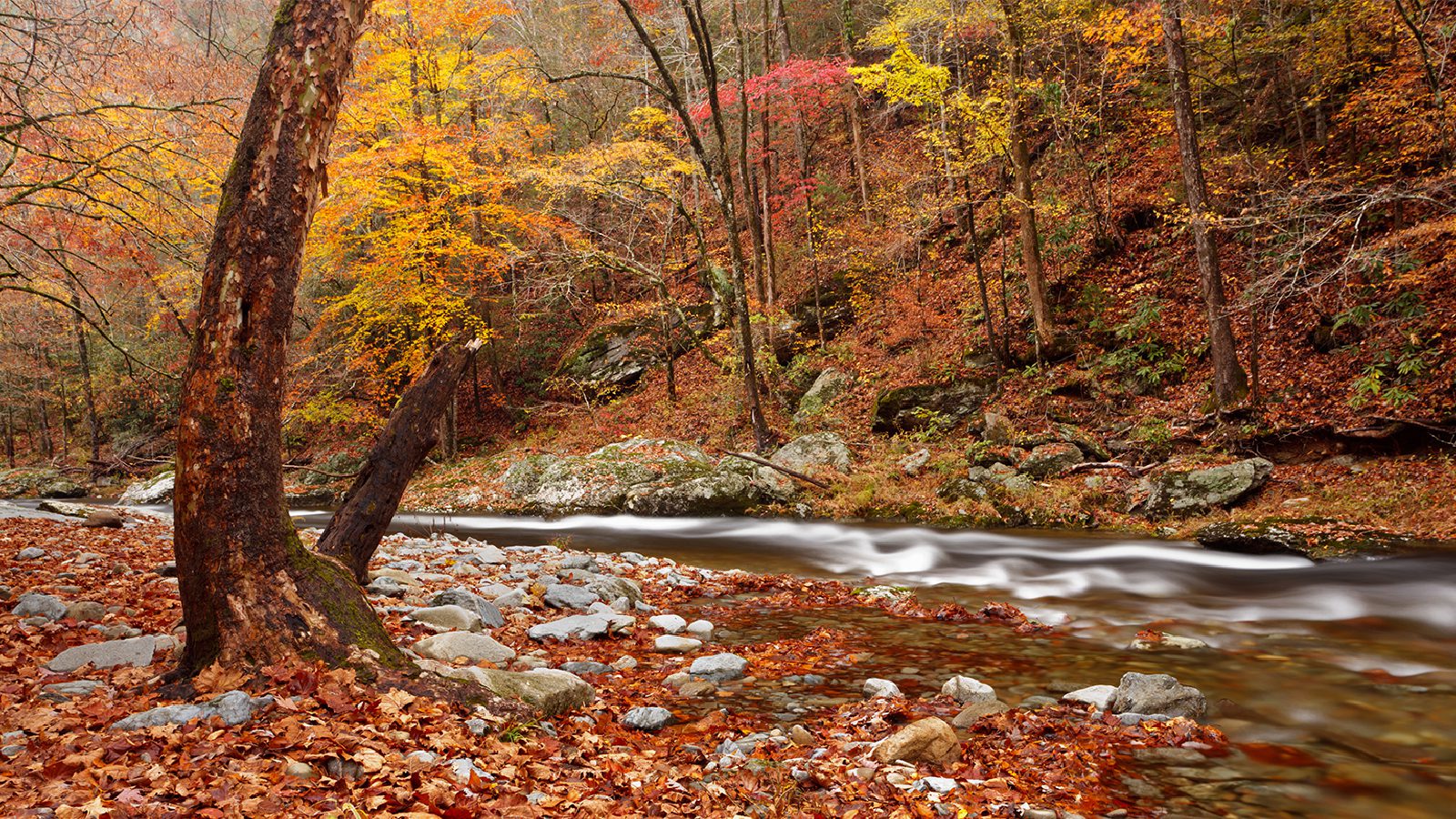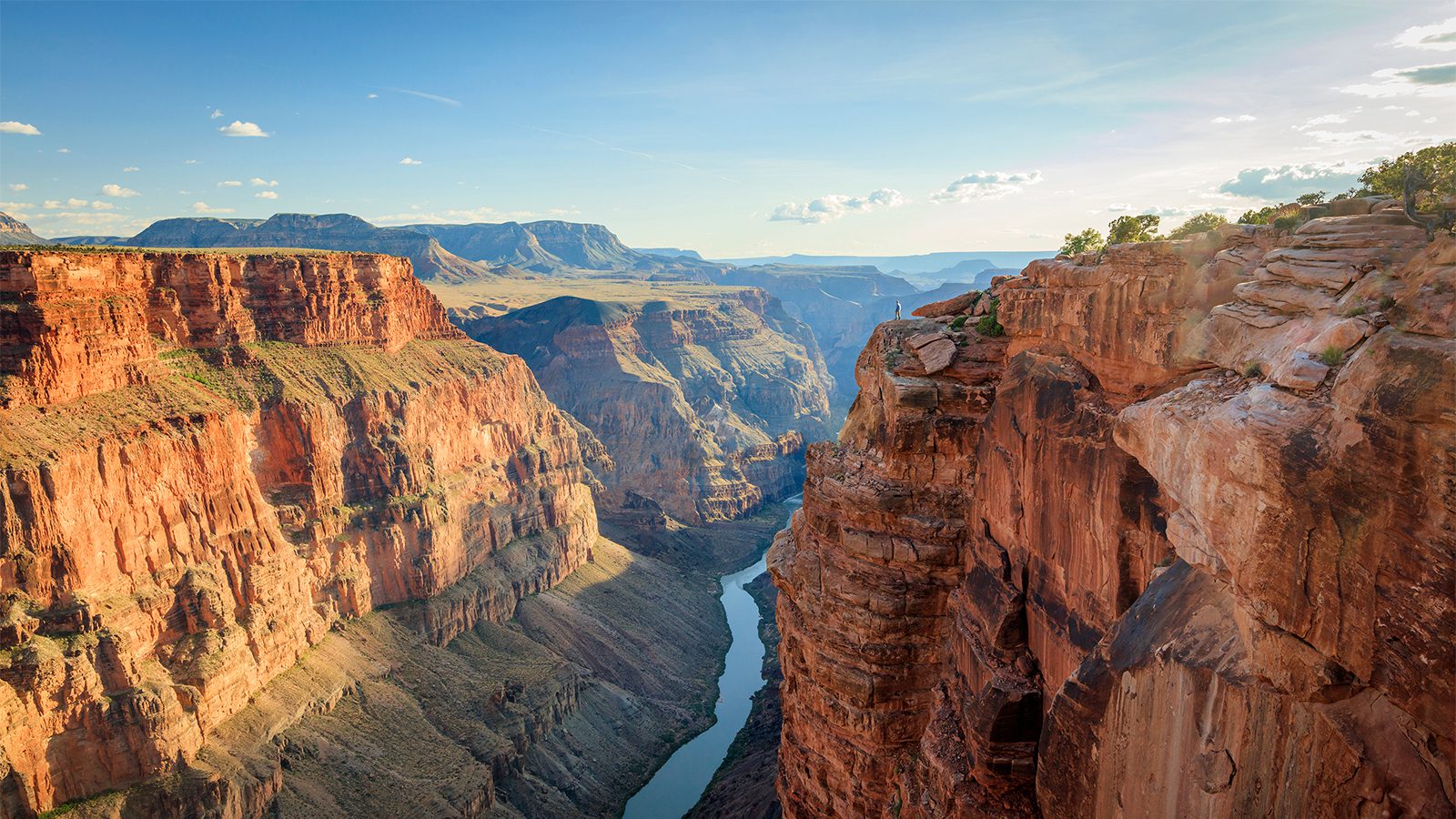The best time to visit the Great Smoky Mountains National Park is from June to mid November.
Summer sees the heaviest park traffic, with a peak number of visitors arriving in July. Crowds thin in September; expect the park to fill up again in October when autumn colors peak.
Page Contents
September to mid November
Fall is a peak period in the Great Smokies. In September, visitors can enjoy pleasant days in the 70s and 80s and chilly nights that drop into the 50s. Biking, hiking, and taking leisurely drives around the park to take in the fall foliage are popular activities during the fall.
September is usually the quietest fall month, and crowds start to return in October. By November, temperatures can drop to almost freezing, and snowfall is possible in higher elevations, which might lead to some road closures.
Mid November to February
Winter temperatures are generally moderate, but it’s not uncommon for higher elevations to have harsh weather. The nighttime lows are at or below freezing, with daytime highs in the mid-30s in high elevations and typically hovering in the 50s in low elevations.
March to May
The weather in March can still be frigid and unreliable. April and May bring higher daytime temperatures in the 70s and 80s, wildflowers blooming in the meadows, and redbud and dogwood trees in the mountain woods.
April and May are the wettest months, with as much as 4 inches of rain.
During this shoulder season, tourists can book accommodation at lower prices on weekdays; however, rates for spring weekends, which draw many in-state visitors, are higher.
What’s on :
- National Park Week (April)
June to August
In the summer, be prepared for higher accommodation costs and traffic congestion on popular roads like the Cades Cove Loop, Roaring Fork Motor Nature Trail, and Newfound Gap Road.
In lower elevations, temperatures surge into the upper 80s and low 90s; however, evenings remain reasonably mild in the low 60s.
Visitors will notice some haze, and afternoon thunderstorms are rather common, even if the humidity is not as high as in other regions of the two states.
Best time for good weather (Summer)
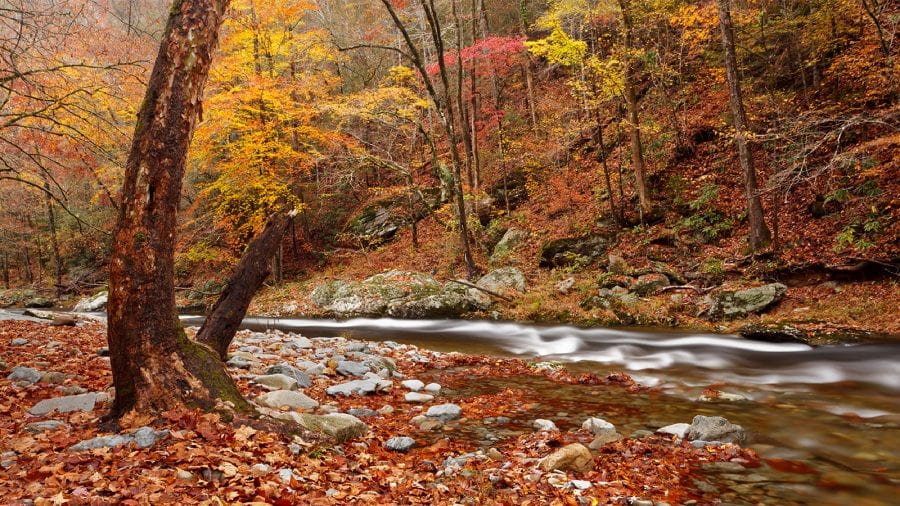
The summer months present the best times for good weather in the Smoky Mountains.
Although the weather is warm, reaching into the 80s, it presents an opportunity to visit the park’s higher elevations, which reach well over 6,000 feet, where temperatures are up to 20 degrees cooler. Because of this temperature change, it’s important to be prepared with jackets and wet weather gear.
Cooler weather from January through March presents an opportunity to visit the park with few crowds; however, these are the most common times for snowfall when some areas of the park can be closed.
Best time for camping (September to November)
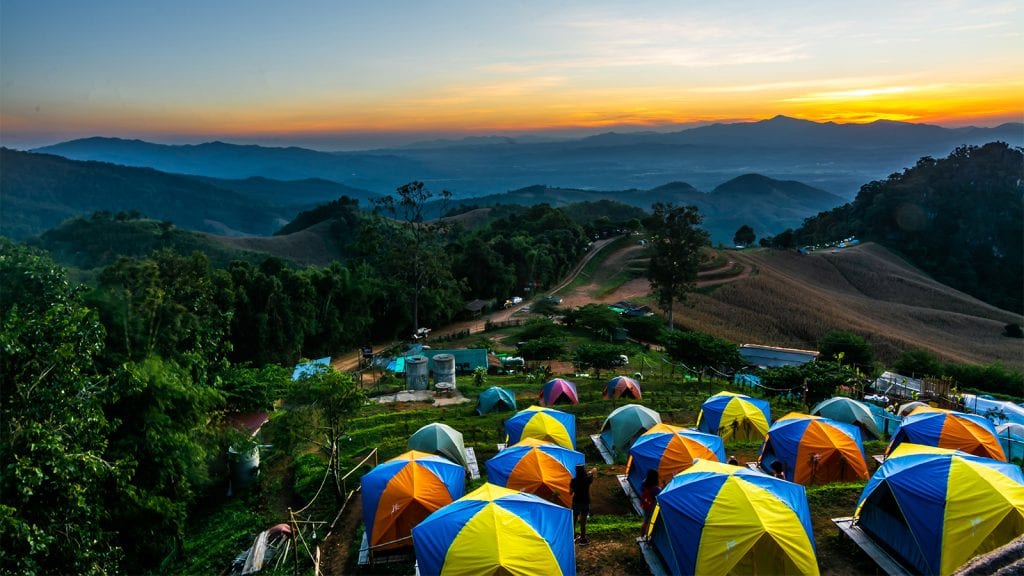
The best time for camping in Great Smokys is from September to early November.
By the start of September, the heat of the summer begins to fade, with high temperatures during the day hovering below 80 and lows in the evening falling into the 50s.
This makes for comfortable days at the campsite and trails followed by crisp nights sitting by an open campfire or wrapped in a cozy sleeping bag.
The summer crowds have also thinned, making campgrounds and backwoods campsites more available. Cooler temperatures at night also mean fewer bugs.
Read More : The Best Campgrounds in Great Smoky National Park
Best time for hiking (June to August)
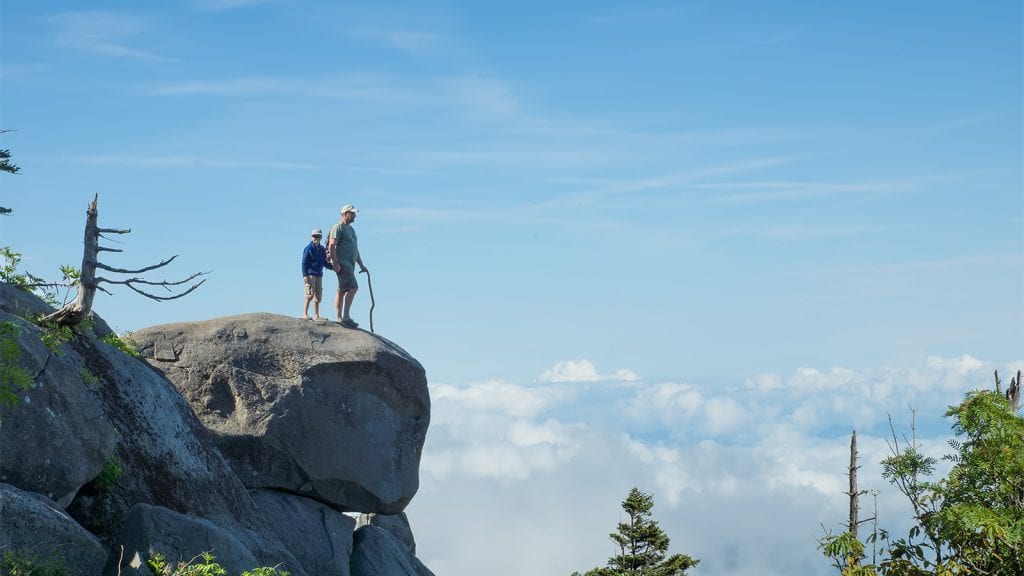
The best time for hiking in the Great Smoky is from June to August.
While you’ll face hotter temperatures, much of the park is at higher elevations, which means you’ll find comfortable temps and low humidity even in mid-July. In fact, for the park’s highest summits, you should take a jacket along with you even on a midsummer hike.
Summer also presents the best time to see the park’s wildlife, which is most active during the summer months. Of course, this is largely subjective. Many hikers enjoy beautiful fall colors in autumn, wildflowers in the spring, and hiking through snow in the winter.
Read More : The Best Hiking Trails in Great Smoky National Park
Best time to avoid crowds (September)
The best time to avoid crowds at Great Smoky Mountains National Park is September.
Certainly, the winter months beat out September when it comes to light crowds, but those cold months are reserved for those who revel in winter hiking. If cold weather camping and hiking isn’t your thing, September presents an opportunity to visit the park while the weather is still warm but the crowds have thinned as families turn their attention to the new school year.
By October, the park swells with people as the leaves change and visitors flock to the park.
Best time for auto touring (October)
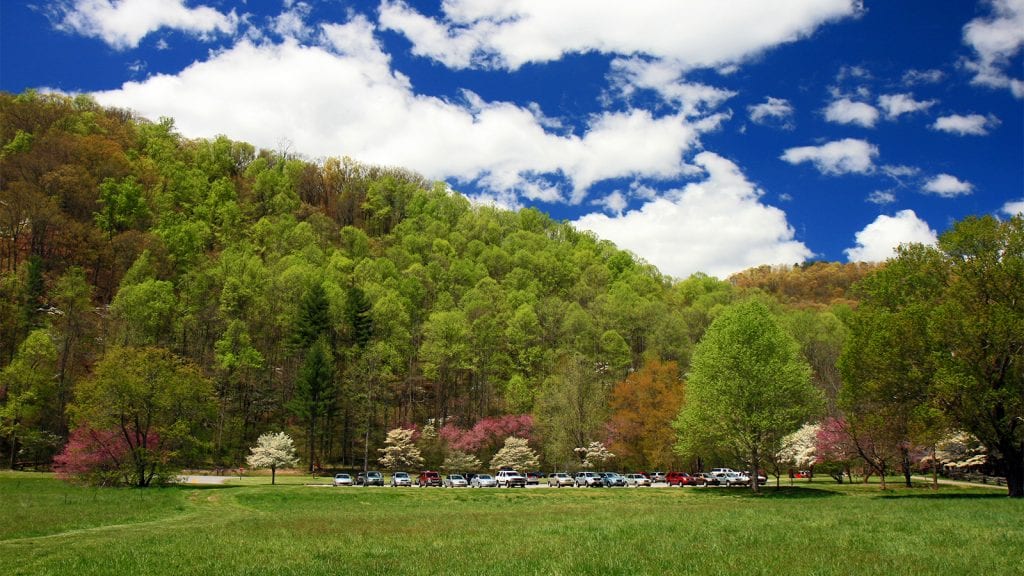
The best time for auto touring in Great Smoky Mountains National Park is October.
This is the prime season for viewing the changing colors of fall, and driving through the park is one of the best ways to do it. With 384 miles of road in the Smokies, there are plenty of routes to choose from with Cades Cove Loop, Cataloochee Valley, and Newfound Gap Road topping the list. Each offers incredible opportunities to view the fall colors during the fall season.
Best time to see wildlife (July to August)
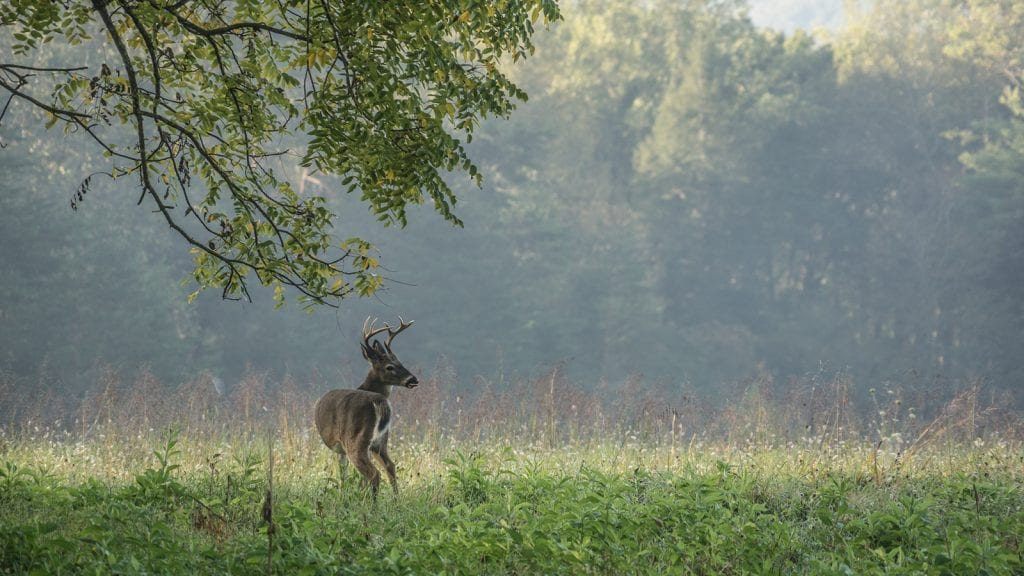
The best time to view wildlife in the Great Smoky Mountains National Park is July and August.
Wildlife in the park is most active during the warmer months. It’s the best time to spy a member of the park’s bear population, as well as its elk herd. It’s also when the park’s population of lizards, the park is known as the salamander capital of the world, and wild turkey are most active.
For those hoping to see bears, watch for them in the morning or at dusk when they typically forage for food.
Best time for biking (September to October)
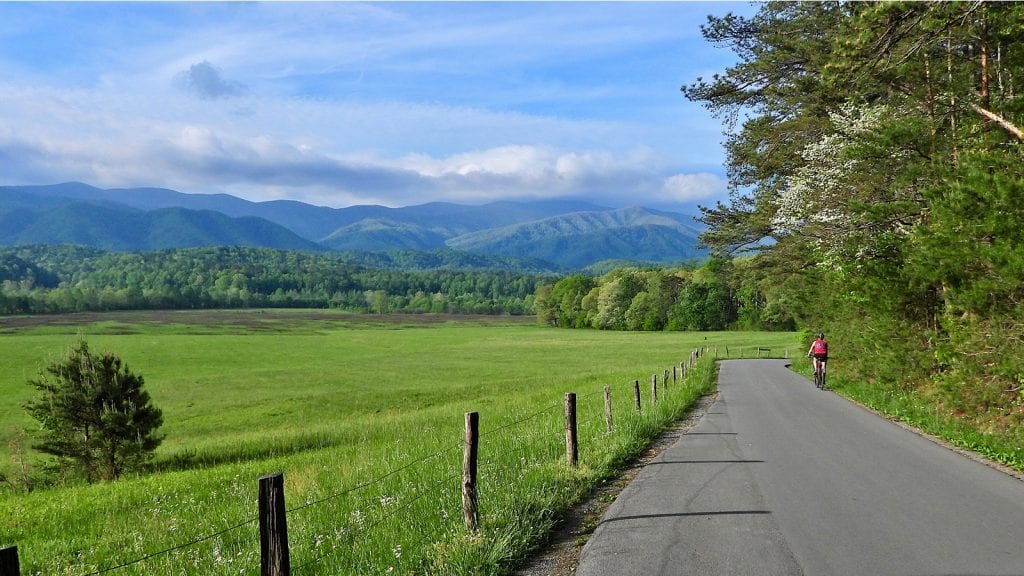
The best time for biking in Great Smoky is from September to October.
This is when the heat of summer has begun to fade, making biking through such areas as Cades Cove Loop and Cataloochee Valley much more enjoyable.
As these are lower areas of the park, temperatures here during the summer months reach well into the 80s. In the fall, temperatures typically top out in the upper 70s or low 80s, while lows will hove in the 50s or 60s, making for much more comfortable bike riding.
Best time for horseback riding (May to June)
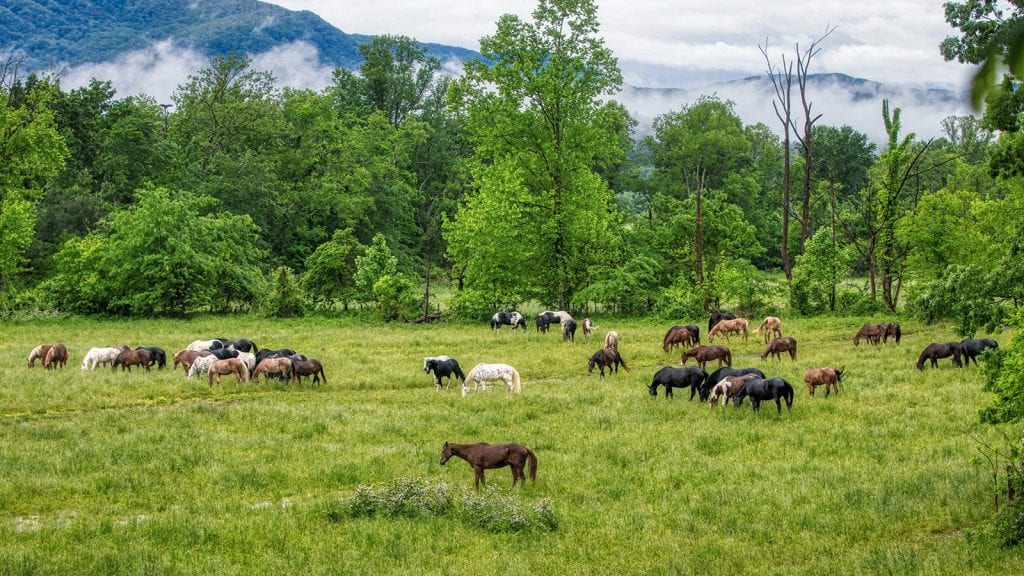
The best time for horseback bridging in the Smokys is from May to June.
The cooler temperatures, coupled with the blooming wildflowers make the spring season an attractive time to ride through the park. It also happens to be one of the park’s low traffic seasons, freeing up trails for horses.
Stables are located in Cades Cove, Smokemont, Smoky Mountain, and Sugarlands. Guided horseback rides are available from mid-March to late November.
Best time to see waterfalls (July)
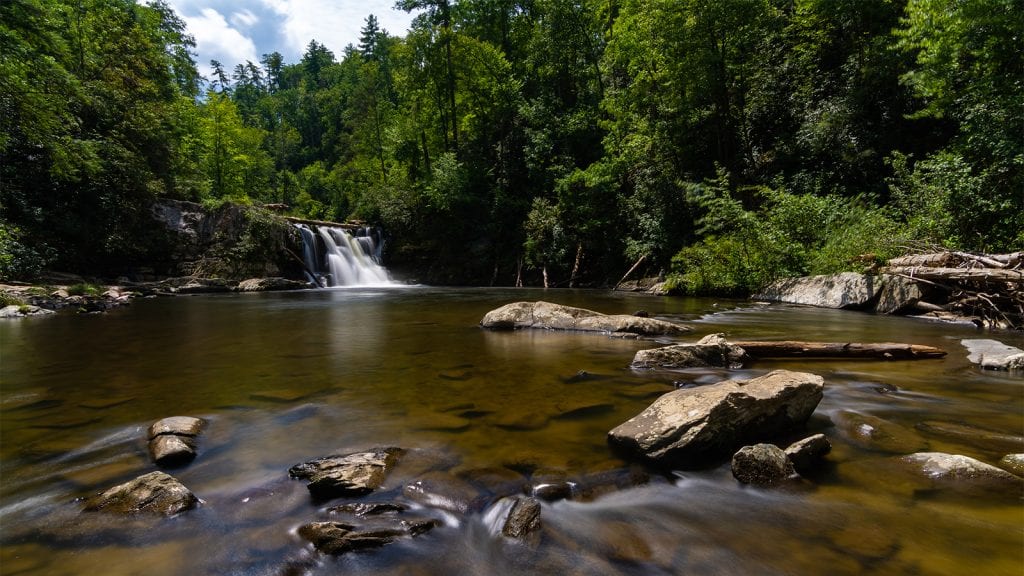
The best time to see waterfalls in the Great Smoky National Park is July.
The park’s waterfalls, including Grotto, Laurel, Abrams, and Rainbow, are fed by rainfall. This rainfall flows down the mountain from such peaks as Mt. Le Conte and Clingman’s Dome, to the falls during the summer months.
The park sees 85 inches of rain each year with July receiving the most rain. This means the falls will be at their highest levels in mid-summer. Winter does offer another variation on waterfall viewing with many of the falls freezing in the colder winter months.
Best time to see wildflowers (February to April)
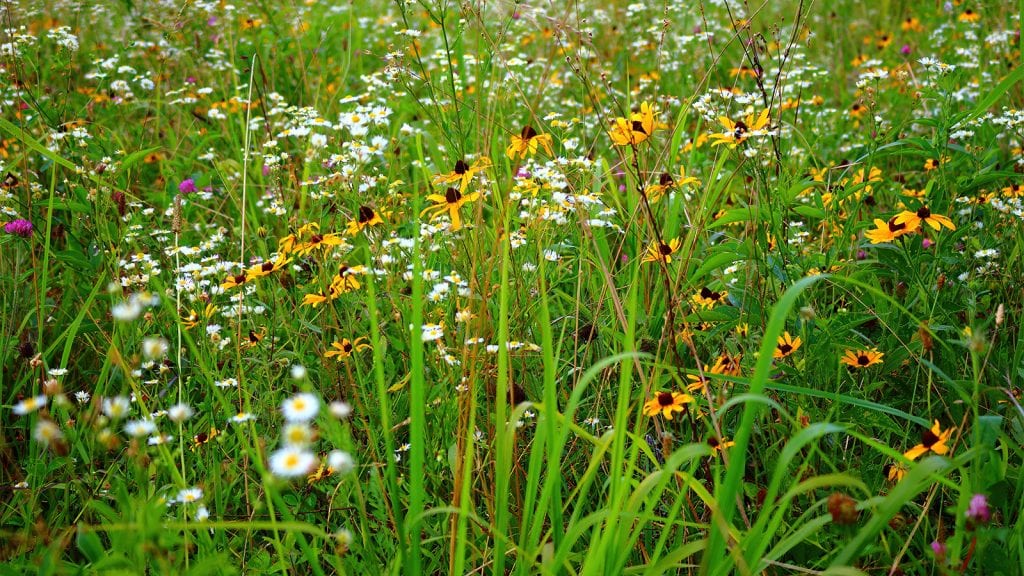
The best time to see wildflowers in the Great Smokys is from February to April.
While February may seem early for viewing flowers, it’s actually the best time to see flowers known as ephemerals, which appear in late winter and early spring, bloom, then disappear by May. Ephemerals include such flowers as trillium, columbine, bleeding heart, and violets.
During the spring the park hosts a week-long festival called the Spring Wildflower Pilgrimage. Wildflower blooms will actually continue with different species of flowers until the fall, which is why the park is also known as Wildflower National Park.
Amanda Williams
Amanda Williams is a writer, plant-nerd, and outdoor enthusiast. She has traveled extensively, around the U.S., throughout Asia, Europe, and Latin America. Everywhere she treks, she takes time to enjoy the outdoors. John Muir is her hero. She aspires to inspire people to live better as he did.
